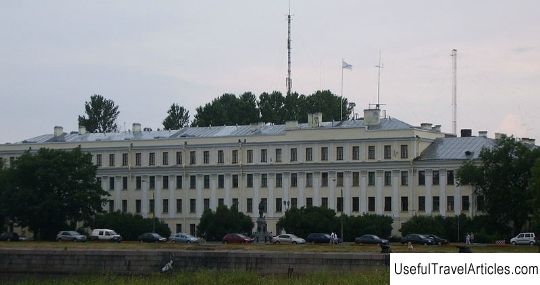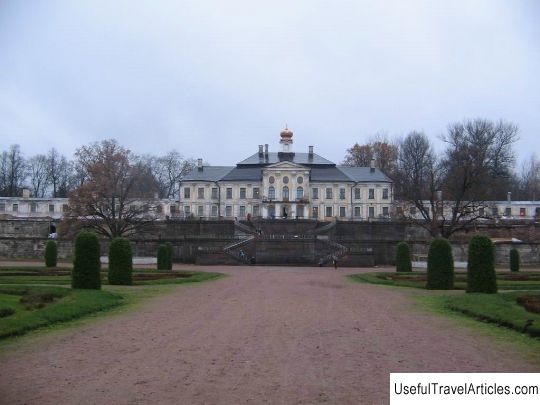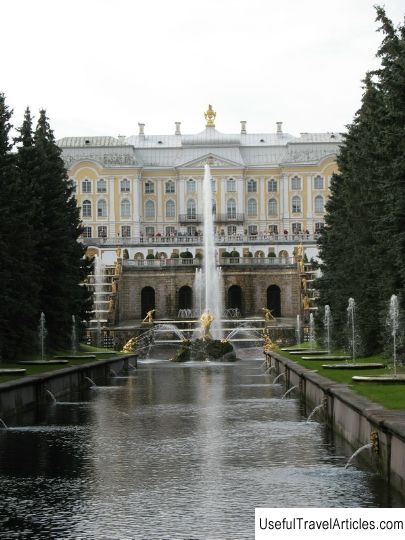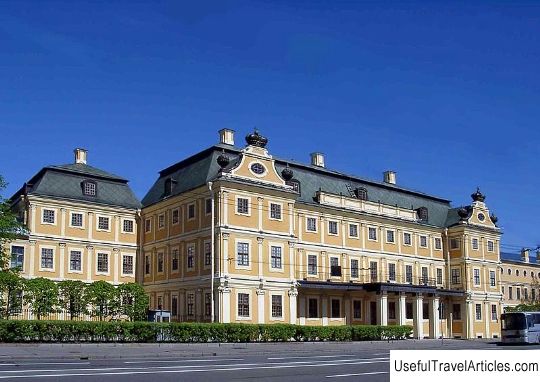Italian palace description and photos - Russia - St. Petersburg: Kronstadt
Rating: 8,0/10 (384 votes) 
Italian palace description and photos - Russia - St. Petersburg: Kronstadt. Detailed information about the attraction. Description, photos and a map showing the nearest significant objects. Photo and descriptionOne of the architectural monuments of the city of Kronstadt is the Italian Palace. In 1717, by order of the governor of the city A.D. Menshikov, construction of the palace began. Johann Braunstein was appointed chief architect. Many Italian masters worked under his leadership, hence the name of the palace. But throughout the nineteenth century, the palace was rebuilt more than once by the architect E.H. Anert, and according to the drawings of the architect A.N. Akutina. The palace was a three-story building, the facades of which were beautifully decorated with bas-reliefs, pilasters, vases, and the roof was crowned with a balustrade and sculpture. An Italian pond with several dozen fountains was built in front of the building's facade, the architect was Giovanni Fontana. The pond was part of the Merchant Harbor, which in the winter served as a haven for ships. There was a large crane on the shore, during wintering, the masts were removed from the ships so that the winter bad weather would not damage the masts themselves and the decks of the ships. In the spring, at the beginning of navigation, the masts were installed in the same way. Right there on the shore there is a building resembling the structure of the ancient Greeks - Rybny Ryad. Here they sold fish, fresh water from Lake Ladoga. Prince A.D. Menshikov also owned palace residences in Oranienbaum and St. Petersburg, but they were inferior in beauty and luxury to the palace in Kronstadt. The end of the construction of the palace came at the time of the conclusion of an armistice between Sweden and the Russian Empire, it was then that Prince Menshikov was arrested, and his property, in particular the palace, was transferred to the city treasury. In the Italian Palace, it was decided to locate a school of navigators under the leadership of Stepan Malygin, one of the first Russian explorers of the Arctic. Graduates of the school became professional navigators who calculated the navigation course of ships. For twenty-seven years, up to 1798, the building of the palace housed a corps of naval cadets. Then the building was given over to the Navigation School, which was later renamed the Naval Technical School, which later retrained into engineering and existed until the start of the revolution. In 1815, the first Russian steamship service between Kronstadt and St. Petersburg was opened. Prior to this, communication between the cities was carried out by sailing ships in the summer. In May 1806, the first ships were launched - "passboats", but by 1815 the plant of the Englishman Charles Byrd was producing a steamer, thanks to which regular passenger flights were launched a little later. Throughout the history of the palace, it has been reconstructed and rebuilt more than once, resulting in the formation of the fourth floor, popularly called the "navigator tower". But due to a large fire that engulfed the Italian Palace in the summer of 1826, the building had to be completely restored and rebuilt. The appearance of the palace became more like the modern type of building. Now it was the House of Officers. The theater of the Baltic Fleet, the sailors' club, the Kronstadt TV and radio company, and the Morskaya newspaper publishing house are located inside it. But, despite all the innovations in the appearance of the building, it still bears the imprints of 18th century architecture.       We also recommend reading House of Podgorsky (Baron's Castle) description and photos - Ukraine: Kiev Topic: Italian palace description and photos - Russia - St. Petersburg: Kronstadt. |




